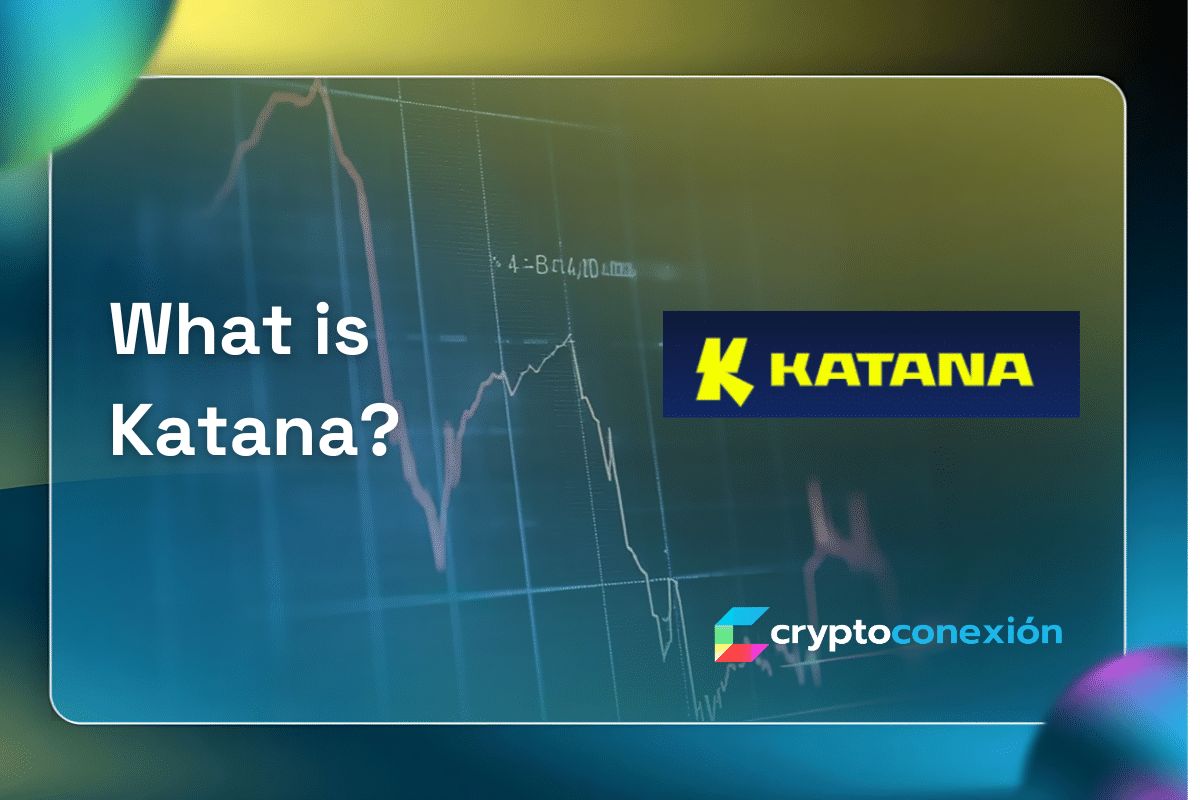Katana is a new blockchain optimized for DeFi, incubated by Polygon Labs and GSR Markets. It’s designed to solve one of the ecosystem’s major challenges: liquidity fragmentation. In this tutorial, we explain how it works, how you can earn rewards like KAT, aUSD, and even a CryptoPunk, and why its focus on sustainable yield makes it one of the most interesting bets of the year. Want to join Katana? Here’s our referral link. |
DeFi is powerful, but it often feels like a messy puzzle. Liquidity is fragmented across dozens of protocols. Those who want to lend, trade, or generate yield have to jump from app to app, as if DeFi were more a collection of scattered pieces than a cohesive platform.
Katana, a new blockchain incubated by Polygon Labs and GSR Markets, wants to change that.
On May 28, the Katana Foundation announced the launch of its private mainnet, which officially went live on June 30, 2025. Katana’s mission is clear: to unify liquidity, simplify yield generation, and lay the groundwork for a sustainable ecosystem.
Let’s take a look at what Katana is, how it works, and what you can do with it.
What is Katana?
Katana is a Layer 2 blockchain built with the Polygon CDK and using AggLayer, a framework that enables native interoperability between chains within the Polygon ecosystem.
Katana acts as an integrated DeFi hub, designed to maximize capital efficiency and real yield. Instead of jumping between multiple platforms, Katana allows you to:
- Lend with Morpho, a non-custodial lending protocol for assets like ETH, USDC, and WBTC.
- Trade on Sushi, a leading DEX with concentrated liquidity pools to minimize slippage.
- Execute advanced strategies on Vertex, a perpetual futures DEX with stable rates thanks to Katana’s deep liquidity.
Key innovations:
- Advanced interoperability: thanks to AggLayer, Katana connects natively with other Polygon chains, eliminating complex bridges and reducing friction.
- Sustainable performance: Katana integrates asset-backed stablecoins from the real world, such as Agora’s aUSD (linked to U.S. Treasury bonds), which channels off-chain yields to liquidity pools. It also offers high-yield staking opportunities with Jito (for SOL) and assets like LBTC (Lombard) and weETH (Ether.fi).
- Memecoin launchpad: Kensei Launchpad allows users to create and launch tokens permissionlessly, fostering community-driven innovation.
- Accessible governance: with Den, vKAT holders have user-friendly interfaces to participate in governance, shaping the future of the ecosystem.
- Transparent vaults: Turtle Club offers a vault platform with daily rewards in KAT (10M KAT allocated), ensuring full visibility for liquidity providers.
- BTC support: through BitVault, Katana integrates Bitcoin-backed assets, expanding its utility in DeFi.
Katana is not just a blockchain; it is a DeFi ecosystem designed from the ground up to be efficient, interoperable, and sustainable.
To gain a deeper understanding of where Katana comes from and the relationships between the different technologies it uses, we recommend you read our tutorial on Polygon here.
Who is behind it?
Katana was not created by an anonymous group in a Telegram chat. Behind it are:
- Polygon Labs, the team behind one of Ethereum’s strongest ecosystems
- GSR, a liquidity provider with global experience in crypto markets
Polygon provides the technology stack. GSR brings operational experience, liquidity, and long-term vision.
Why now?
According to Marc Boiron, CEO of Polygon Labs, DeFi fragmentation is the biggest current obstacle:
“Digital assets are too scattered. Investing becomes difficult or outright impossible. Katana wants to change that.”
With the help of AggLayer, Katana can connect natively with other chains in the Polygon ecosystem. Its focus is not on building just another app, but on creating DeFi infrastructure that works from day one.
What problem does Katana want to solve?
- Fragmented liquidity → multiple DEXs and lending markets that split liquidity.
- Weak incentives → yield farming without long-term commitment.
- Idle assets → funds that remain without generating real value.
Katana seeks to consolidate the DeFi ecosystem with:
- A single DEX (Sushi), a single lending platform (Morpho), a single perpetual trading platform (Vertex).
- A system called Chain-owned Liquidity (CoL) that ensures deep liquidity.
- An incentive model that rewards active users and prevents passive capital.
How does Katana work?
Katana is more than a blockchain. It is a closed, optimized, and circular DeFi system that includes:
- VaultBridge: converts your deposits in ETH, USDC, USDT, or WBTC into productive assets by investing them in secure vaults on Ethereum (Morpho).
- Yield loops: the generated yield returns to the network and is distributed to active users.
- Chain-owned Liquidity (CoL): a reserve that guarantees liquidity, reduces slippage, and maintains predictable rates.
Instead of attracting liquidity with unrealistic APYs, Katana redirects real yield to those who actively participate.
The KAT token
KAT is Katana’s native token, designed for governance and utility functions within the network. The Katana Foundation plans to distribute approximately 15% of the total KAT supply to POL stakers on Ethereum, including those participating in liquid staking protocols.
No-transfer period: think long term
All KAT rewards will be subject to a no-transfer period of up to 9 months.
This is not a limitation; it is part of the design:
- It prevents “mercenary capital” (farmers who come only for the tokens).
- It fosters an aligned community.
- It reinforces the stability of the token and the system.
KAT and vKAT: governance with intention
When the no-transfer period ends, you will be able to lock your KAT and receive vKAT, the protocol’s governance token.
With vKAT you will be able to:
- Vote on how KAT incentives are distributed
- Support or reject changes to core apps
- Actively participate in the evolution of the ecosystem
It’s a model similar to Curve or Velodrome, but adapted to a more optimized and connected environment.
What about liquidity?
This is where GSR shines.
To avoid the “cold start” that many new blockchains suffer from, GSR handles the bootstrapping:
- Initial liquidity provision
- Market-making
- Swaps and support for lending pools
This allows users to have a smooth and frictionless experience from day one.
What makes Katana unique?
✔️ Unified liquidity: one chain, multiple apps, no friction
✔️ Real interoperability: via AggLayer and Polygon CDK
✔️ Diseño DeFi-first: rendimiento sostenible, gobernanza activa
✔️ Backed by giants: Polygon + GSR
✔️ Incentives led by Turtle Clubhouse: no noise, just impact
✔️It uses SP1, a solution developed by SuccinctLabs, which leverages zero-knowledge cryptography to solve the blockchain trilemma: achieving speed, security, and decentralization without compromises. This enables fast, secure, and reliable transactions while maintaining privacy and scalability at the core of the network.
✔️ It incorporates Chainlink CCIP (Cross-Chain Interoperability Protocol), Data Streams, and Data Feeds to power secure, interoperable, and real-time DeFi applications. These Chainlink solutions ensure reliable data, frictionless cross-chain transactions, and a robust DeFi ecosystem without compromising security or efficiency.
✔️ Katana is compatible with Subgraph Studio from The Graph Protocol, allowing developers to query Katana’s on-chain data through Subgraphs and Substreams. This integration provides ultra-fast access to data for frontends and applications, facilitating the creation of smooth and efficient DeFi experiences.
✔️ It offers full support for development tools such as ethers.js, web3.py, and various SDKs, along with RPC providers like Chainstack. This integration allows developers to build DeFi applications without friction, using familiar tools and a reliable connection to the network, facilitating the development of fast and secure dApps.
✔️ It offers native support for non-Ethereum assets, such as Solana’s SOL, through partners like Universal. This allows Katana to function as a unified chain that integrates all assets, facilitating transactions and liquidity across different blockchain ecosystems without the need for complex bridges, making Katana a hub for all assets.
Less than a month after its public launch, Katana is already showing accelerated and sustained growth in the DeFi ecosystem.
According to updated data from Dune and DeFiLlama (July 2025), its total value locked (TVL) exceeds $296.8 million, with an increase of 1.96% in just 24 hours. Additionally, during that same period, the trading volume on its DEX reached $14.27 million, and more than 10 million transactions have already been processed. These figures reflect that Katana is not only gaining traction but is building real momentum thanks to a powerful combination of liquidity, adoption, and technical efficiency.
What's next?
- Integrations with more apps and protocols are expected.
- New incentive programs with KAT will be announced.
- On-chain governance will be available post-launch.
How to participate
- Connect your wallet (MetaMask, Rainbow, etc.) to the Katana network.
- Deposit compatible assets such as ETH, USDC, USDT, WBTC, or POL.
- Make transactions on the Katana network: start interacting on platforms like SushiSwap, Morpho, Steer, Yearn, and others.
- Add funds to the available vaults and participate in DeFi strategies.
- Explore and interact with Katana’s DApps to increase activity and visibility.
- Active users can receive rewards in KAT. For now, you can monitor your rewards. And in the future, you will be able to:
- Lock your KAT, earn vKAT, and vote.
In summary
Katana is not just another chain. It is a DeFi system designed with intention: fewer protocols, more performance; fewer empty incentives, more impact.
At CryptoConexión, we do not provide investment advice and always recommend that you do your own research (DYOR), but if you want to explore a protocol focused on sustainability, Katana offers:
✅ Rewards without losing control of your assets
✅ Real participation in the governance of the ecosystem
✅ A clear vision of how a more resilient model can be built in DeFi











